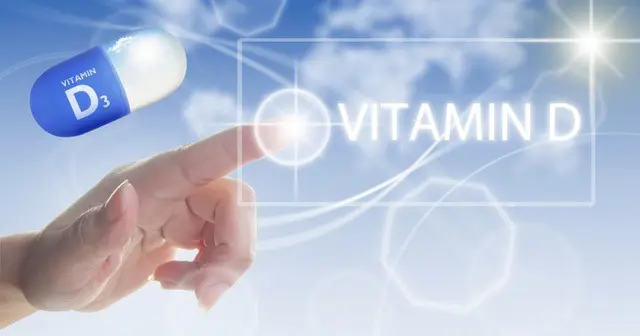We have been waiting for many months to feel the warmth of the sun and to brighten our days with good reason!
Not only does the sunshine help our vegetables and flowers to grow but it provides the unique and invaluable means for us to naturally produce our own Vitamin D. That’s why it is called the “sunshine vitamin”.
Vitamin D is actually made by the body, but ONLY in exposure to sunlight. The skin must be exposed to UVB rays in order for this to occur. About 10 – 15 minutes per day just until you get slightly pink between 10:00 am and 3:00pm.
Sunlight reacts to a cholesterol-like compound in the skin known as 7‑dehydrocholesterol, creating Vitamin D3 (cholecalciferol), hence the term “sunshine vitamin”. However, this is not the whole picture — this vitamin also requires liver + kidney participation in order to function optimally within the body. Vitamin D3 is converted by enzymes in the liver to 25-OHD3 which can be 2 – 5 times more potent than cholecalciferol itself, next the kidneys then convert the 25- OHD3 to 1,25 – (OH)2D3, which is now 10 times more potent than cholecalciferol . This particular vitamin requires whole body participation as well as a healthy liver and kidneys.
This fat-soluble vitamin plays an essential role in the health of the entire body where Vitamin D receptors (VDR) have been found throughout the body including tissues as well as bone.
In Canada and the US, as well as northern climates above the 40th latitude, Vitamin D deficiency is widespread and all too common. According to the Vitamin D Council, “If your shadow is longer than you are tall, you are not making much Vitamin D”.
How did we get so deficient? In our clinical experience Vitamin D tops the deficiency list along with Vitamin B12 and Vitamin C. There are numerous reasons why this particular vitamin deficiency is widespread:
- The Great Indoors – it is not natural to work in a cubicle, behind a desk and drive long distances. We are not outdoors nearly enough to obtain sufficient exposure to the sun for the manufacture of this compound. Approximately a half hour of full body exposure is required to make 10,000 IU of Vitamin D.
- The Sunscreen Debate – the fear of sun exposure and recommendations to wear sunscreen blocks UVB rays from getting through to the skin to create Vitamin D3. Sunscreen is necessary for prolonged exposure to the sun, but it is essential to build a natural defense to sun exposure over time. However, be aware, the darker the skin, the less Vitamin D is made!
- Void in Food – There aren’t many foods available which provide us with this essential nutrient. According to World’s Healthiest Foods – the top Vitamin D containing foods are: Salmon, Sardines, Milk (goat & cow), eggs and shiitake mushrooms. Notably, is the age old practice of a spoonful of COD LIVER OIL which not only provides a sufficient amount of Vitamin D but also a great source of fat and Vitamin A as well. Check out World’s Healthiest Foods for more information on this and other nutrient and food related topics.
What depletes Vitamin D?
Certain medications can either deplete the body of Vitamin D stores or inhibit the absorption or conversion of Vitamin D. These medications include:
- Anti Inflammatory medication — Corticosteroids
- Anti convulsion medication – certain Barbiturates
- Cholesterol Lowering Medication – Bile Acid Sequesterants and/or Statins
- GERD or Ulcer medications — H2 Antagonists
- Oral Contraceptives
Normal Versus Optimal – The best way to test for Vitamin D levels is through blood testing known as 25(OH) D test.
This test may be requested from your medical doctor or Health House now offers Vitamin D testing.
New research was conducted by scientists at the University of California, San Diego School of Medicine and Creighton University School of Medicine in Omaha. It is groundbreaking research because it establishes the relationship between Vitamin D dosage and circulating Vitamin D levels in the blood.
Vitamin D turns out to be one of the simplest, safest and most affordable ways to prevent degenerative disease and sharply reduce long-term health care costs. It’s your serum level that matters — not your dosage, whether you’re measuring dosage as time spent in the sun, or the oral dose of a Vitamin D supplement. Up to 8,000 IUs needed daily.
“We found that daily intakes of Vitamin D by adults in the range of 4,000 to 8,000 IU [international units] are needed to maintain blood levels of Vitamin D metabolites in the range needed to reduce by about half the risk of several diseases — breast cancer, colon cancer, multiple sclerosis and type 1diabetes,” said Dr. Cedric Garland of the UCSD.
Additional health benefits of sun exposure include: Enhancing mood and energy through the release of endorphins, treating skin diseases such as acne, psoriasis, vitiligo, atopic dermatitis and scleroderma. UV radiation also enhances skin barrier functions. Sunshine helps synchronize important biorhythms through sunlight entering your eye and striking your retina. Treating Seasonal Affective Disorder (SAD), regulating body temperature and relieving fibromyalgia pain.
Our recommendation is to have your Vitamin D levels checked every 3 months and base your supplementation on maintaining optimal levels of this essential nutrient. Your health depends on it!

